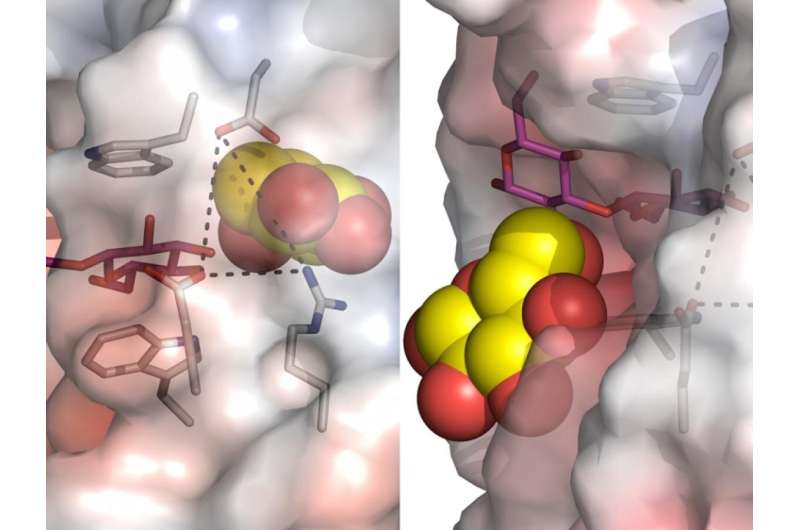Uncovering ultra-fast plant enzyme dynamics could advance cereal production, medical and pharmaceutical industries

Researchers from the University of Adelaide have uncovered previously unknown properties in a plant enzyme that could lead to advances in cereal production, medical and pharmaceutical industries.
The research—published in Nature Communications—also has the potential to be applied to the design of chemicals, drugs, herbicides and pesticides where enzymes are an environmentally friendly and cost-effective alternative to current methods.
"We discovered these enzymes are not rigid, as often seen in crystal structures, but are flexible and prone to remarkable changes in shape," said project leader Emerita Professor Maria Hrmova, from The University of Adelaide's School of Agriculture, Food and Wine, and the Waite Research Institute.
"This was achieved by examining the binding behavior of sugars in the enzyme at ultra-fast time scales.
"We solved 25 new crystal structures and combined the structural data with powerful multi-scale modeling, which revealed unexpected dynamic processes in a plant enzyme.
"Our study provides a blueprint on enzyme dynamics, which was inaccessible before.
"This means we could potentially improve the properties of the enzyme that are critical to germination and the way the roots grow, leading to higher barley yields, which is crucial in cereal production.
"There are also a variety of other fields that this research could apply across multiple industries and products.
"This work is the result of eight years of research, not only from the School of Agriculture, Food and Wine and the Waite Research Institute, but other institutions in Australia, and also in China, France, Spain and Thailand.
"It has truly been a collaborative effort and one we are extremely proud of, especially when food scarcity is such a critical and important issue around the world. The possibilities that stem from this work are endless."
Enzymes are essential to life. They significantly increase the rate of a chemical reaction without undergoing any permanent chemical change to themselves.
But when enzymes convert, the substances with which an enzyme operates move in and out from the enzyme at high speed.
This process inhibits the investigation of these interactions using standard experimental techniques—a problem that brought to light using this multidisciplinary approach.
"This work could lead to significant improvements in catalytic rates, stability, and product inhibition in these enzymes," said Emerita Professor Hrmova.
"The new findings are applicable for developing or manufacturing products through new forms of bioengineered enzymes that could be applied outside of biological systems through the chemical and biotechnology industries."
More information: Sukanya Luang et al, The evolutionary advantage of an aromatic clamp in plant family 3 glycoside exo-hydrolases, Nature Communications (2022). DOI: 10.1038/s41467-022-33180-5
Journal information: Nature Communications
Provided by University of Adelaide





















